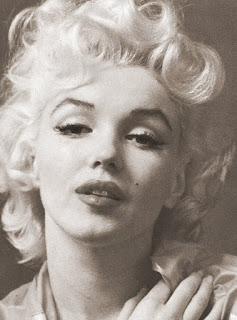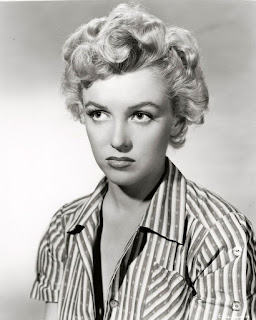With the recent release of the long sought-after JFK documents, there’s been a renewed interest in all things related to the 35th president. Few things of the Kennedy era are more recognizable than the dress Marilyn Monroe wore when she serenaded him with her sultry “Happy Birthday, Mr. President.” The dress has remained out of the public’s view for most of the time since that night in 1962. That all changed last year when Orlando-based Ripley’s Entertainment purchased the dress and other items from the birthday gala. The dress sold for a whopping $4.8 million – with the auction fees, it clocked in at over $5 million, making it the most expensive dress ever sold. The Jean Louis-designed, champagne-colored dress has over 2,500 crystals and 6,000 rhinestones hand-sewn on it. “This is the most famous item of clothing in 20th-century culture,” says Ripley's VP of Exhibits and Archives, Edward Meyer, who is responsible for acquiring items for Ripley’s for nearly four decades, including the dress. “It has the significance of Marilyn, of JFK, and of American politics.” Ripley’s Orlando Odditorium will also screen Marilyn Monroe films on select Saturdays throughout December. The exhibit is scheduled to remain in Orlando through the end of the year. Source: www.orlandoweekly.com
“One of the bright spots in Ladies of Chorus (1948) is Miss Monroe’s singing,” wrote critic Tibor Krekes. “She is pretty and, with her pleasing voice and style, she shows promise”—hardly a rave, but nevertheless a gratifying first review that did not alter Harry Cohn’s decision. His major star was Rita Hayworth, just as Fox had Betty Grable and MGM had Lana Turner; none of them was listening to Harry Lipton or Lucille Ryman when they spoke of a potentially sensational new movie star named Marilyn Monroe with unusual qualities. “Under Marilyn’s baby-doll, kitten exterior, she was tough and shrewd and calculating,” was Lucille’s assessment. ‘Hollywood will never forgive me—not for leaving, not for fighting the system—but for winning, which I’m going to do,’ Marilyn told Susan Strasberg.
At a New Year’s Eve party given by producer Sam Spiegel, in 1948, Marilyn had been introduced to Johnny Hyde, executive vice-president of the William Morris Agency and one of Hollywood’s most powerful representatives. Hyde was besotted and prevailed on Marilyn to accompany him on a short vacation to Palm Springs, where he spoke of her career prospects. Johnny Hyde was desperately in love. Despite Johnny Hyde’s strong recommendation of her to MGM, production chief Dore Schary did not offer a deal for more work. His excuse was that the studio had Lana Turner under contract and therefore no need of a rival blonde; to colleagues like Lucille Ryman Carroll, he expressed a quaint moral outrage at the Hyde-Monroe affair. Ladies of the Chorus was already a forgotten second feature, and The Asphalt Jungle, despite some critical acclaim, was too bleak to win much popular favor.
When not studying with her drama coach Natasha Lytess, Marilyn posed for pinups in evening gowns or swimsuits, scoured the trade dailies and was seen in the movie colony’s dinner-party circuit with Johnny, with whom life became increasingly difficult as his health became ever more fragile. Despite this, he refused to limit himself, escorting Marilyn to an endless round of social and corporate events, presenting her proudly as valuable and available talent. More poignantly, Johnny also wanted Marilyn known around town as his fiancée, the desirable young woman he still hoped to marry. Fearful of displeasing or alienating her, Johnny acted the nervous, benighted lover, taking action perilous in his condition: he was often breathless and in pain after trying to satisfy what he presumed were her sexual needs. Johnny Hyde had no opportunity to resolve with Marilyn the tension that underlay his unrequited love, and she had no chance to express her gratitude. “I don’t know that any man ever loved me so much,” she said in 1955. “Every guy I’d known seemed to want only one thing from me. Johnny wanted to marry me, but I just couldn’t do it. Even when he was angry with me for refusing, I knew he never stopped loving me, never stopped working for me.”
A passionate love affair between Marilyn Monroe and John F. Kennedy has been assumed for so long that it has achieved as solid a place in public awareness as almost any other event in the man’s presidency. All that can be known for certain is that on four occasions between October 1961 and August 1962, the president and the actress met, and that during one of those meetings they telephoned one of Marilyn’s friends from a bedroom; soon after, Marilyn confided this one sexual encounter to her closest confidants, making clear that it was the extent of their involvement. In October 1961, after a photography session for a magazine, Marilyn asked Allan Snyder to deliver her to a party at Patricia and Peter Lawford’s Santa Monica beach house. The occasion was a dinner party honoring President Kennedy, and among the other guests were several blond movie stars—Kim Novak, Janet Leigh and Angie Dickinson, for all of whom the president had a keen appreciation. All contrary allegations notwithstanding, this was the first meeting between Marilyn Monroe and John Kennedy; hearsay about any earlier introduction simply cannot be substantiated. The schedules of Monroe and Kennedy since his January 1961 inauguration reveal wide geographic distances between them. That October night, Marilyn was driven back to her apartment by one of the Lawfords’ staff.
The second encounter occurred during February 1962, when Marilyn was again invited to a dinner party for the president, this time at the Manhattan home of Fifi Fell, the wealthy socialite widow of a famous industrialist. She was escorted to the Fell residence by Milton Ebbins. The third meeting occurred on Saturday, March 24, 1962, when both the president and Marilyn were houseguests of Bing Crosby in Palm Springs. On that occasion, she telephoned Ralph Roberts from the bedroom she was sharing with Kennedy. “She asked me about the solus muscle,” according to Roberts, “which she knew something about from the book The Thinking Body, and she had obviously been talking about this with the president, who was known to have all sorts of ailments, muscle and back trouble.” That night in March was the only time of her “affair” with JFK. “A great many people thought, after that weekend, that there was more to it. But Marilyn gave me the impression that it was not a major event for either of them: it happened once, that weekend, and that was that,” said Roberts. Accounts of a more enduring affair with John Kennedy, stretching anywhere from a year to a decade, owe to fanciful supermarket journalists and tales told by those eager for quick cash or quicker notoriety: those who fail to check the facts of history and are thus easily dispatched as reliable sources.
“Marilyn liked [President Kennedy] the man as well as the office,” according to Sidney Skolsky, among the first friends to be informed of the March tryst; he added that she also enjoyed the fantasy that this experience carried—“the little orphan waif indulging in free love with the leader of the free world.” And as she soon after told Earl Wilson, Rupert Allan and Ralph Roberts, she found John Kennedy amusing, pleasant, interesting and enjoyable company, not to say immensely flattering. As for Mrs. Kennedy, as Skolsky added, “Marilyn did not regard her with envy or animosity.” The posthumous revelations of Kennedy’s philandering revealed the impossibility, for obvious reasons, of pursuing any serious romance with one woman. The exaggeration of his “affair” with Marilyn is part of the myth of King Arthur’s Camelot. There was a need to believe in the tradition of courtly intrigues and infidelities—Lancelot and Guinevere, Charles II and Nell Gwynn, Edward VII and Lily Langtry. But in this case there was but one rendezvous between the attractive, princely president and the reigning movie queen; to follow the Arthurian simile: the mists of Avalon are easily dispersed by shining reality’s clear light onto the scene. It is important to establish definitively the truth of this matter not only for the sake of historical accuracy but also because of a far more damaging rumor that began after Marilyn Monroe’s death.
The unfounded and scurrilous accounts of a concomitant or subsequent sexual affair with Robert F. Kennedy, has been even more persistent than that of the presidential liaison. It has also led to the completely groundless assertion of a link between Robert Kennedy and Marilyn’s death—a connection so outrageous as to be hilarious were it not also injurious to the man’s reputation. The rumors of an affair with Robert Kennedy are based on the simple fact that he met Marilyn Monroe four times, as their schedules during 1961 and 1962 reveal, complementing the testimony of Edwin Guthman, Kennedy’s closest associate during this time. But Robert Kennedy probably never shared a bed with Marilyn Monroe. Guthman, a Pulitzer Prize–winning investigative reporter and journalist, was Special Assistant for Public Information in the Kennedy administration as well as senior press officer for the Justice Department. The travel logs of the attorney general’s schedule for 1961–62 (preserved in the John F. Kennedy Library and in the National Archives) support the detailed accounts provided by Guthman. These, collectively, attest to the fact that Robert Kennedy and Marilyn Monroe enjoyed a socially polite relationship—four meetings and several phone calls over a period of less than ten months. But their respective whereabouts during this time made anything else impossible—even had they both been inclined to a dalliance, which is itself far from the truth on both counts.
Marilyn’s first meeting with Robert Kennedy occurred several weeks before her introduction to the president. “On either October 2 or 3, 1961,” said Guthman: “Kennedy and I were attending a series of meetings with United States attorneys and members of the FBI in Albuquerque, Phoenix, Los Angeles, San Francisco, Portland and Seattle. The attorney general and I attended a dinner party at the Lawfords, and around midnight Marilyn decided to go home. But she had drunk too much champagne, and we were worried for her. Bobby and I would not let her drive her car, and we did so together, delivering her safely to her door.” The second meeting between the attorney general and Marilyn occurred on Wednesday evening, February 1, 1962, when he and his entourage dined at the Lawfords en route from Washington to the Far East on a diplomatic journey. “That evening,” according to Guthman, “Marilyn was quite sober—a terrifically nice person, really—fun to talk with, warm and interested in serious issues.” Pat Newcomb, also present at the dinner, remembered that Marilyn really cared about learning. The day before [the dinner party], Marilyn told me, “I want to be in touch, Pat—I want to really know what’s going on in the country. She was especially concerned about civil rights. She had a list of questions prepared. When the press reported that Bobby was talking to her more than anyone else, that’s what they meant. I saw the questions and I knew what they were talking about. She identified with all the people who were denied civil rights.” —Marilyn Monroe: The Biography (ekindle, 2014) by Donald Spoto






























































